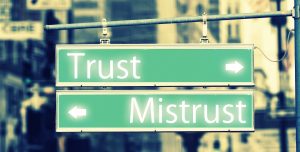 The Silent Disruptor – Why Lack of Trust is a Barrier to Success
The Silent Disruptor – Why Lack of Trust is a Barrier to Success
Ever been part of a team where no one felt safe speaking up? If you’ve experienced that sinking feeling of not being heard, you’re not alone. The lack of trust in the workplace is a silent killer that’s costing your business. Today, in organizations where digital transformation, AI, and innovative strategies dominate conversations, there’s a fundamental yet often overlooked element that can make or break an organization: trust. For executives and leaders, the absence of trust is not a relational issue; it’s a strategic liability that affects decision-making, team dynamics, and ultimately, business outcomes. Here we dive deep into the implications of mistrust at work, exploring its hidden costs and offering actionable insights to rebuild trust in your teams and projects.
The Cost of Mistrust – Beyond the Obvious
Trust impacts every aspect of business, from employee engagement to customer loyalty. Yet, many leaders still underestimate the real costs of a lack of trust. Research from Edelman’s Trust Barometer earlier in the year revealed that over 60% of employees didn’t trust their leadership, and this mistrust translates into lower productivity, higher turnover, and lost revenue opportunities.
Key Implications:
- Productivity Drain: Mistrust leads to micromanagement, increased oversight, and reduced autonomy. A Harvard Business Review study showed that high-trust organizations experience 50% higher productivity.
- Decision Paralysis: In low-trust environments, decisions are delayed due to fear of backlash or blame, creating bottlenecks and stifling innovation.
- Talent Exodus: Top talent is quick to leave when trust is eroded, leading to increased recruitment costs and a loss of institutional knowledge.
Strategic Trust-Building – From Crisis to Opportunity
Building trust is not a one-time effort but a continuous strategic initiative. Here’s how organizations can rebuild and sustain trust:
- Promote Transparency and Open Communication:
Leaders must set the tone by being transparent about decisions, sharing challenges openly, and encouraging feedback. This openness fosters a culture where employees feel valued and involved.- Practical Steps: Regularly scheduled town halls, anonymous feedback channels, and transparent decision-making processes can significantly improve trust levels.
- Empower Through Delegation:
Trust is built when leaders empower their teams. Micromanagement signals mistrust, whereas delegation shows confidence in the team’s capabilities.- Practical Steps: Start small by delegating tasks with clear objectives, provide resources, and allow teams to execute without constant oversight.
- Celebrate Accountability, Not Just Success:
Cultivate a culture where accountability is celebrated as much as achievements. Recognizing those who own their mistakes as learning moments can shift the organizational mindset from blame to growth.- Practical Steps: Incorporate “Lessons Learned” sessions into project reviews to normalize accountability and continuous improvement.
Trust as a Strategic Advantage: A Competitive Edge
Traditional Management vs. Trust-Centric Leadership:
Traditional management often focuses on control and oversight. In contrast, trust-centric leadership emphasizes collaboration, autonomy, and accountability, leading to faster decision-making and greater innovation.
Future Implications:
As AI and automation redefine job roles, the human element of trust becomes even more critical. The future workforce will demand environments where trust is ingrained in the culture, making it a key differentiator for organizations that wish to attract top talent.
The Competitive Edge:
Organizations that cultivate trust not only enhance their internal dynamics but also improve external perceptions. This means even more in an era where brand loyalty is fragile, trusted organizations are better positioned to retain customers, navigate crises, and adapt to market shifts.
The Strategic Imperative of Trust
Trust is not just a soft or fluffy skill, it’s a strategic imperative that impacts every layer of an organization. For executives, professionals, and thought leaders, recognizing the hidden costs of mistrust and actively working to build a trust-centric culture can unlock new levels of performance, engagement, and innovation. The road to rebuilding trust is not easy, but the rewards – higher productivity, stronger teams, and a resilient organization are well worth the effort.
Reflect on your current organizational culture. Are you fostering trust, or inadvertently eroding it? Take the first step today by engaging your teams in open dialogue, empowering decision-making, and demonstrating consistent, trustworthy leadership. The future of your organization depends on it.

